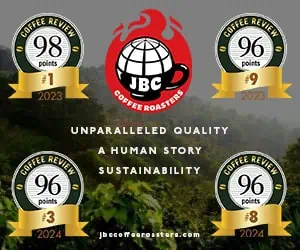With this review of coffees from Honduras the excitement may reside more in the story than in the cup itself. The story is how this Central American nation, long considered mainly a source of low-to-decent quality, commercial-grade coffees, has stepped up over the past five years or so and is producing significantly better coffees and more of them. Of the eighteen Honduras coffees we were able to source for this article, exactly half attracted ratings of 90 or better, an impressive showing. True, we had no surprising, unexpected profiles or transcendent samples soaring to 94 or higher. This month’s highest-rated Honduras coffee was 92 and the other 90-plus samples remained poised at 90 or 91. But these coffees impressed with old-fashioned virtues: They carried the day with clean, elegant structure and a gentle, classic complexity.
If there were aroma/flavor characteristics that tended to run through the best of this month’s samples they would be chocolate or its variants and a crisp, fresh-cut aromatic wood. For example, our highest-rated Honduras, the De La Paz Cocafel Honduras (92), offered excellent structure – round, vibrant but balanced acidity, soft, plush mouthfeel, plenty of natural sweetness – while adding a soft carob-like chocolate, vanilla suggestions, and a crisp hint of a spicy, sandalwood-like aromatic wood. A quieter version of this profile, perhaps more typical generally of what we cupped, was the Irving Farm Los Lirios Organic Honduras (90), which displayed a similarly graceful balance but a bit less distinction aromatically, in this case a crisp chocolate we associated with roasted cacao nib and an aromatic wood note suggesting fresh-cut fir. The Roast Co. Honduras Catracha Los Patios “Alfonso” Microlot (91) was an essay in quiet balance and completeness: virtually flawless in structure, with hints of grapefruit and flowers complicating a caramelly chocolate.
If we take suave structure and chocolate tones complicated by hints of aromatic wood, citrus and flowers as the fundamental pattern among the eighteen coffees we tested, then we also encountered some fine variations on that basic pattern, ranging from the briskly dry OQ La Cuchilla Farm (91) to the candied tartness of the Coava David Mancia (91) through the musky, dark-chocolate depth of the Muddy Dog Montaña Verde (90) to the slightly savory, peppery chocolate sweetness of the Blue Bottle Cerro Gacho (90).
The Classic Cup Prevails
Why the prevalence in Honduras of this appealing but relatively straightforward style of cup? The answer may be that Honduras farmers at this point in the development of their industry do not seem to be experimenting with the more radical forms of green coffee differentiation pursued by many of their micro-lot-generating colleagues in Panama, Costa Rica or El Salvador. All of the samples we cupped for this month’s article were conventionally wet-processed, for example: no fancy dried-in-the-fruit naturals or honey-processed experiments. And, perhaps more importantly, all appeared to come from mainstream botanical varieties of Arabica, varieties that are respected but not celebrated for their unusual cup character: Caturra, Typica, Catuai, with only an occasional appearance of the less predictable, often more distinctive Bourbon.
So the two main tools market-savvy growers elsewhere in Central America are using to generate small lots of very distinctive-tasting coffees were not deployed by any of the producers of this month’s Honduras samples. The upside of this situation for some of our readers is that fancy micro-lots from rare varieties processed by alternative, often labor-intensive methods tend to fetch considerably higher prices than more conventional coffees, and often tend not to taste like the classic Latin-American profiles that many people prefer and enjoy. What the best of these Honduras coffees offer is good value for fine coffees and engaging variations on a style of coffee familiar to and beloved by a great many Americans.
The Honduras Achievement
Perhaps readers would be wise to drink these classics while they can; perhaps next time we review Honduras coffees some of the producers there, having mastered the classic cup, will be competing with their market-savvy colleagues elsewhere in Central America turning out expensive single-variety lots of Geshas, Bourbons or other exotic varieties, with the intrinsic distinction of these varieties carefully nursed to peak difference through the use of alternative processing methods.
But at the moment producers in Honduras should be roundly celebrated for what they have achieved: a dramatic improvement in basic quality and standards, an achievement that is widely recognized among coffee insiders and which appears to be confirmed by the general excellence of the eighteen samples we cupped this month.
According to my San Francisco Bay Area coffee neighbor and regular informant Max Fulmer of Royal Coffee, the overall improvement in Honduras coffee is most likely owing to improvements in infrastructure and supply chain practices, like holding finished green coffee in the cooler highlands rather than in hot, humid lowland staging areas, and the successful efforts by Honduran coffee authorities and allied organizations to educate growers and improve quality control practices.
The Direct Trade Factor
But the success of most of the best of this month’s samples is also owing to the achievement of roasters, importers and producers in developing the person-to-person, roaster-to-farmer relationships that have transformed the top end of the North American coffee market over the past several years. Almost all of the top-rated coffees we reviewed this month appear to have been imported on the basis of small-scale, “direct trade” relationships, sometimes mid-wived by importers, but also often the result of travel and face-to-face and spoon-to-cup encounters between roasters and producers.
The Roast Co. Catracha Los Patios “Alfonso” Microlot, reviewed here at 91, is a case in point, and an engaging one. Catracha Coffee is in large part the creation of Honduran-American Mayra Orellana-Powell, who inherited a small farm in her native village of Santa Elena from her grandmother and subsequently returned to Honduras to lead an effort to import coffees from this tiny farm and neighboring farms into the United States. With the help of Royal Coffee’s Max Fulmer and the support of at least two American roasters, Blue Bottle Coffee and Roast Co., this three-year-old effort succeeded this season in importing almost a container of Santa Elena coffee into the United States with a much higher return to the producers than they had ever gotten before. And local coffee drinkers experienced a higher return too, in the form of graceful microlots like the one reviewed here.
2013 The Coffee Review. All rights reserved.












